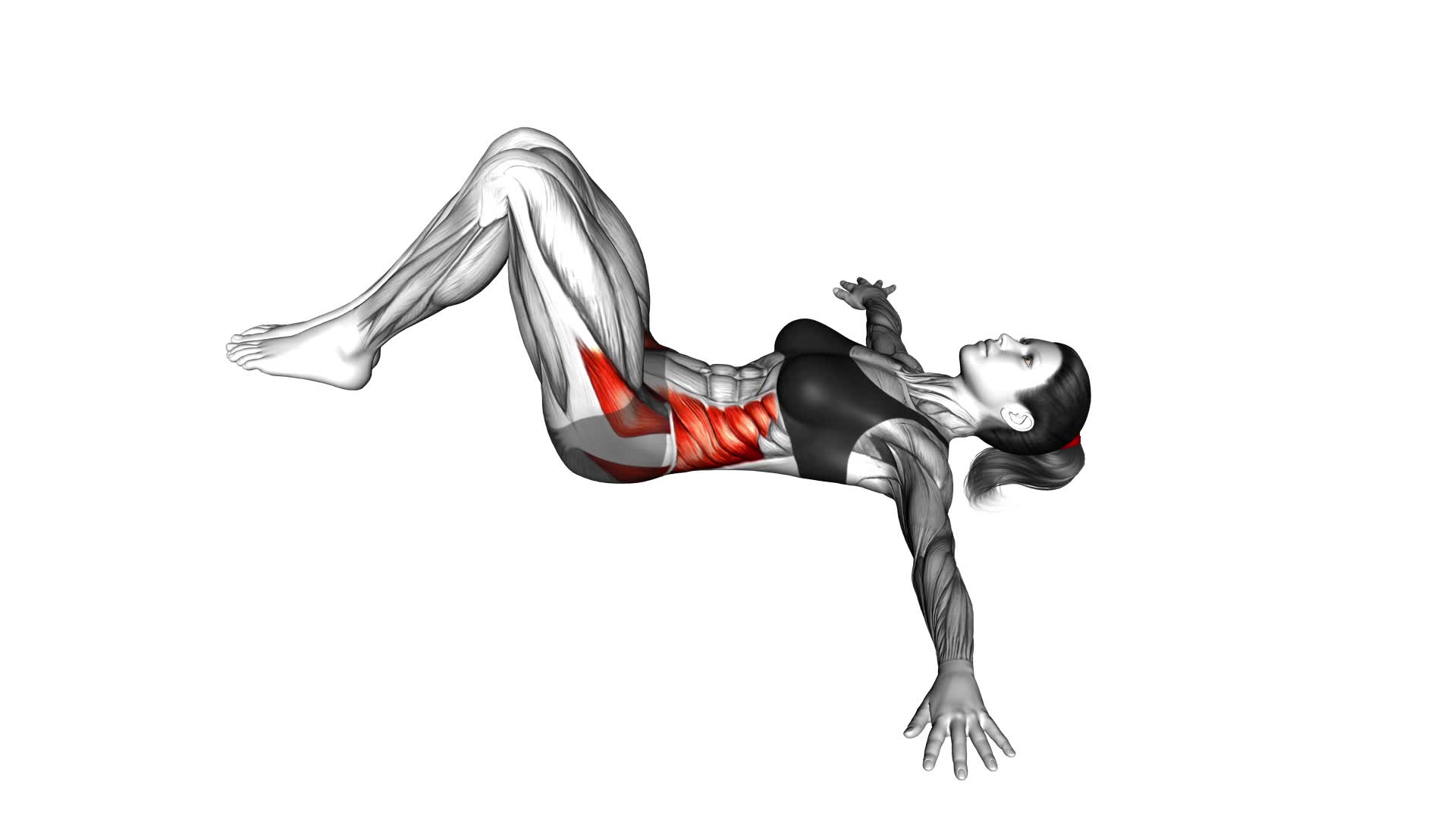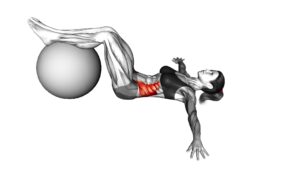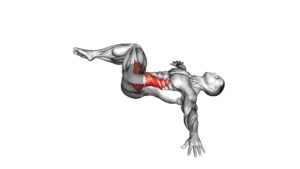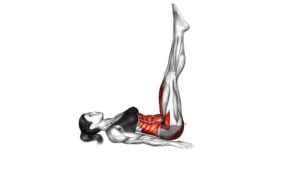Bent Knee Lying Twist – Video Exercise Guide & Tips

Looking to strengthen your core and improve flexibility? Check out the Bent Knee Lying Twist!
Watch This Exercise Video
In this video exercise guide, we'll show you the proper form and technique for this effective exercise. Whether you're a beginner or an advanced fitness enthusiast, we've got variations and modifications to suit your level.
Avoid common mistakes and maximize the effectiveness of your workout with our helpful tips.
Get ready to twist your way to a stronger, more flexible body!
Key Takeaways
- The Bent Knee Lying Twist improves spinal mobility and strengthens muscles surrounding the spine.
- It enhances posture, reduces the risk of back pain or injury, and provides relaxation and stress relief.
- The exercise stimulates the parasympathetic nervous system, reducing stress levels.
- Proper form and technique include maintaining a stable upper body, engaging core muscles, using proper breathing technique, and keeping knees bent and feet flat on the floor for stability.
Benefits of the Bent Knee Lying Twist
You should regularly incorporate the Bent Knee Lying Twist into your exercise routine because it offers numerous benefits. This exercise is highly effective in improving spinal mobility, which is essential for maintaining a healthy and flexible spine. By twisting your lower body while keeping your upper body stable, you engage the muscles surrounding your spine, helping to increase their strength and flexibility. This can lead to improved posture and reduced risk of back pain or injury.
In addition to improved spinal mobility, the Bent Knee Lying Twist also provides relaxation and stress relief. As you perform the exercise, you can feel the tension being released from your lower back and hips, promoting a sense of relaxation and relief. The twisting motion also stimulates the parasympathetic nervous system, which helps to calm the body and mind, reducing stress levels.
Now that you understand the numerous benefits of the Bent Knee Lying Twist, it's important to learn the proper form and technique for the exercise. By following the correct form, you can maximize the effectiveness of the exercise and minimize the risk of injury.
Proper Form and Technique for the Exercise
To ensure proper execution of the Bent Knee Lying Twist, it's crucial to maintain a stable upper body while engaging the muscles surrounding your spine. Proper form and technique are essential for maximizing the benefits of this exercise.
One key element is core engagement. By activating your core muscles, including the abdominals and obliques, you create a solid foundation for the movement and enhance your overall stability. This engagement not only helps protect your spine but also allows for a more effective twist.
Another important aspect to consider is your breathing technique. As you perform the Bent Knee Lying Twist, remember to inhale deeply before initiating the twist and exhale fully as you rotate your torso. This intentional breathing pattern helps facilitate the movement and allows for better spinal mobility. By focusing on your breath, you can also enhance your mind-body connection and increase the effectiveness of the exercise.
Maintaining proper form throughout the exercise is crucial. Ensure that your shoulders remain relaxed and your neck is aligned with your spine. Avoid any excessive strain or tension in these areas. Additionally, keep your knees bent and your feet flat on the floor for stability.
Variations and Modifications for Different Fitness Levels
To accommodate different fitness levels, there are several variations and modifications available for the Bent Knee Lying Twist exercise. Whether you're a beginner or an advanced exerciser, these options will help you customize the exercise to suit your needs.
For beginners, a great progression option is to start with a smaller range of motion. Instead of bringing your knees all the way to the floor, you can begin by twisting just halfway. As you build strength and flexibility, gradually increase the range of motion until you can touch the floor with your knees.
Another modification is to use equipment to assist you. Placing a folded towel or yoga block between your knees can provide extra stability and support. This is especially helpful if you have difficulty keeping your legs together during the twist.
On the other hand, advanced exercisers can challenge themselves by adding resistance. Holding a dumbbell or medicine ball in your hands as you twist will engage your core and upper body muscles even more.
Common Mistakes to Avoid While Performing the Exercise
Avoiding common mistakes is crucial when performing the Bent Knee Lying Twist exercise. By being mindful of these errors, you can ensure that you're maximizing the benefits of the exercise while avoiding injury. Here are some common mistakes to avoid:
- Rushing the movement: It's important to perform the Bent Knee Lying Twist with control and precision. Avoid rushing through the exercise, as this can lead to improper form and potential strain on the muscles. Take your time and focus on the quality of the movement.
- Lifting the shoulders off the ground: Keep your shoulders firmly planted on the ground throughout the exercise. Lifting the shoulders can strain the neck and diminish the effectiveness of the stretch. Instead, concentrate on rotating the hips and spine while keeping the upper body stable.
- Twisting too far: While it's important to rotate the hips and spine, avoid over-twisting. Twisting too far can put excessive strain on the lower back and lead to injury. Stay within a comfortable range of motion and gradually increase it as your flexibility improves.
Tips for Maximizing the Effectiveness of the Bent Knee Lying Twist
Are you wondering how to maximize the effectiveness of the Bent Knee Lying Twist exercise? Well, here are some tips to help you get the most out of this workout.
First, focus on your breathing techniques during the exercise. As you twist your lower body, exhale deeply to engage your core muscles and promote better spinal rotation. Inhale as you return to the starting position. This rhythmic breathing pattern will enhance the effectiveness of the exercise and improve your overall stability.
To further maximize the benefits of the Bent Knee Lying Twist, integrate it into a full body workout routine. This exercise primarily targets the obliques, but you can combine it with other exercises to work different muscle groups. For example, you can pair it with push-ups or planks to engage your upper body, or with squats or lunges to target your lower body. By incorporating the Bent Knee Lying Twist into a comprehensive routine, you'll achieve a more balanced and effective workout.
Frequently Asked Questions
How Often Should I Perform the Bent Knee Lying Twist Exercise?
To get the most out of the bent knee lying twist exercise, you may be wondering how often to do it.
The frequency of performing this exercise depends on your fitness goals and current workout routine. However, it's generally recommended to incorporate it into your routine 2-3 times per week.
This exercise helps improve flexibility, strengthens the core, and stretches the spine, providing numerous benefits for your overall fitness and well-being.
Can I Do the Bent Knee Lying Twist if I Have a Back Injury?
If you have a back injury, it's important to take precautions when doing the bent knee lying twist exercise.
It's recommended to consult with your healthcare provider or a qualified professional before attempting this exercise. They can provide modifications or alternative exercises that are more suitable for your condition.
Prioritizing your safety and avoiding further injury is key when dealing with a back injury.
Is It Normal to Feel a Stretch in My Hips During the Exercise?
Feeling a stretch in your hips during the Bent Knee Lying Twist exercise is completely normal. This exercise is designed to improve hip mobility, so it's expected to feel some tension in that area.
However, if you experience any pain or discomfort, it's important to listen to your body and modify the exercise accordingly. Beginners can start with smaller twists and gradually increase the range of motion as they build strength and flexibility in their hips.
Can I Use a Yoga Block or Towel to Assist With the Bent Knee Lying Twist?
Yes, you can definitely use a yoga block or towel to assist with the bent knee lying twist. Using a yoga block can help provide support and stability, allowing you to maintain proper alignment during the exercise.
Placing a towel under your knees can also offer some cushioning and make the movement more comfortable. These props can be helpful for beginners or those with limited flexibility.
Are There Any Alternatives to the Bent Knee Lying Twist for Targeting the Obliques?
If you're looking for alternatives to target your obliques, there are a couple of options you can try.
One is the side plank exercise, which engages the oblique muscles while also working your core.
Another option is the Russian twist, where you sit with your legs elevated and rotate your torso from side to side.
Both of these exercises can provide a great workout for your oblique muscles.
Conclusion
In conclusion, the bent knee lying twist is a beneficial exercise for improving flexibility and core strength.
By following proper form and technique, individuals of all fitness levels can safely perform this exercise.
It's important to avoid common mistakes and focus on maximizing the effectiveness of the exercise.
Incorporating the bent knee lying twist into your fitness routine can help you achieve your goals and enhance your overall physical well-being.

Author
Years ago, the spark of my life’s passion ignited in my mind the moment I stepped into the local gym for the first time. The inaugural bead of perspiration, the initial endeavor, the very first surge of endorphins, and a sense of pride that washed over me post-workout marked the beginning of my deep-seated interest in strength sports, fitness, and sports nutrition. This very curiosity blossomed rapidly into a profound fascination, propelling me to earn a Master’s degree in Physical Education from the Academy of Physical Education in Krakow, followed by a Sports Manager diploma from the Jagiellonian University. My journey of growth led me to gain more specialized qualifications, such as being a certified personal trainer with a focus on sports dietetics, a lifeguard, and an instructor for wellness and corrective gymnastics. Theoretical knowledge paired seamlessly with practical experience, reinforcing my belief that the transformation of individuals under my guidance was also a reflection of my personal growth. This belief holds true even today. Each day, I strive to push the boundaries and explore new realms. These realms gently elevate me to greater heights. The unique combination of passion for my field and the continuous quest for growth fuels my drive to break new ground.







